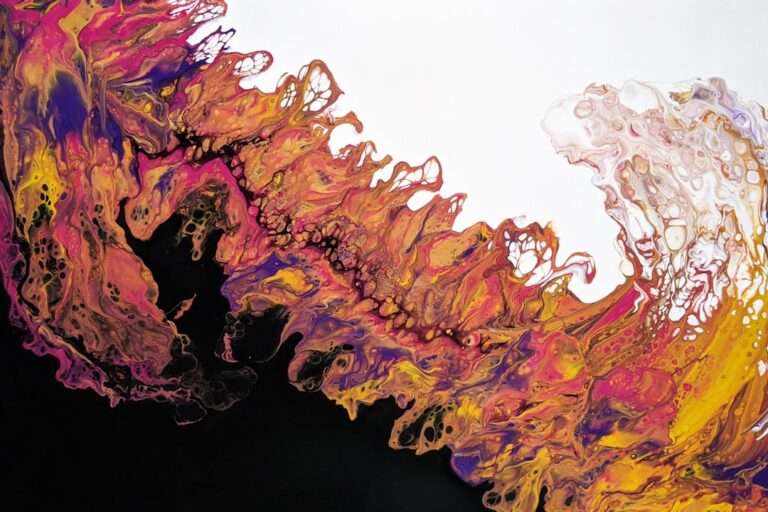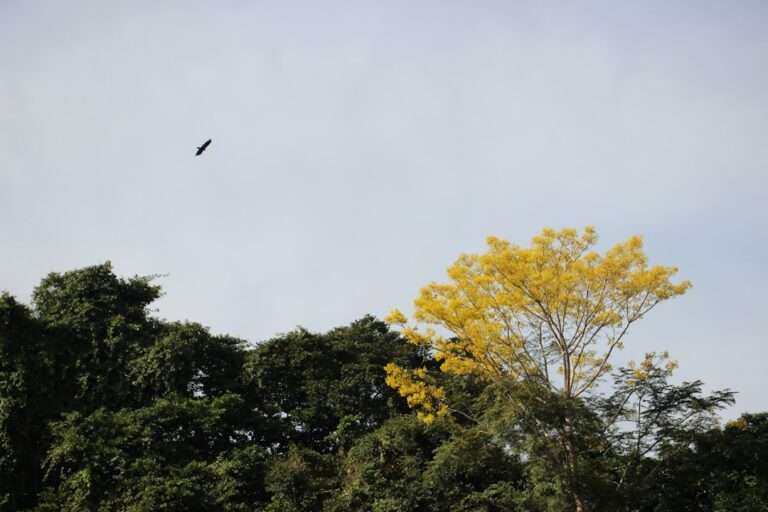How is the yin-yang symbol understood in Taoism?

The Yin-Yang symbol, or Taijitu, originates from ancient Chinese philosophy and is closely linked to Taoism. It represents the Taoist concept that the universe is governed by a natural order of interconnected and interdependent opposing forces. The symbol consists of a circle divided into two teardrop-shaped halves, one black (Yin) and one white (Yang), each containing a smaller circle of the opposite color.
This design illustrates the presence of Yin within Yang and Yang within Yin, emphasizing their interconnectedness. In Taoist philosophy, Yin embodies feminine, passive, dark, and cold aspects of nature, while Yang represents masculine, active, light, and warm aspects. These qualities are not absolute but complementary and in constant flux.
The symbol visually depicts the dynamic balance between these forces, highlighting the cyclical nature of existence and the importance of harmony and equilibrium. The Yin-Yang concept is fundamental to Taoist teachings and has significantly influenced Chinese culture and thought for centuries. It provides a framework for understanding the natural world and human experiences, emphasizing the importance of balance and the recognition that seemingly opposite forces can be complementary and interdependent.
Key Takeaways
- The Yin-Yang symbol originated in Taoism and represents the concept of balance and harmony in the universe.
- In Taoist philosophy, Yin and Yang are complementary forces that interact to create a dynamic equilibrium.
- The symbol represents the interconnectedness of opposing forces in nature and the universe, such as light and dark, hot and cold.
- Taoist practices and traditions incorporate the Yin-Yang symbol to promote balance and harmony in various aspects of life.
- The Yin-Yang symbol has been adapted and interpreted in modern contexts, influencing art, design, and popular culture.
The Concept of Yin and Yang in Taoist Philosophy
The Natural World Reflects the Duality
This duality is reflected in the natural world, where night follows day, winter follows summer, and so on. In Taoist philosophy, the balance between Yin and Yang is essential for achieving harmony and well-being. When one force dominates over the other, imbalance occurs, leading to disharmony and discord.
The Symbol of Balance
The symbol of the Yin-Yang represents this delicate balance, with each half containing a small circle of the opposite color, signifying the presence of one within the other. This illustrates the idea that nothing is purely Yin or purely Yang, but rather a combination of both.
Embracing Change and Balance
This concept has profound implications for how Taoists approach life, emphasizing the need to embrace change and find balance in all aspects of existence.
The Symbol’s Representation of Balance and Harmony

The Yin-Yang symbol is a powerful representation of balance and harmony in Taoist philosophy. The circular shape of the symbol signifies wholeness and unity, while the division into two halves reflects the duality of existence. The black and white teardrop shapes represent the opposing forces of Yin and Yang, with each containing a small circle of the opposite color to illustrate their interconnectedness.
This visual representation emphasizes the idea that harmony can only be achieved through the balance of these opposing forces. In Taoist teachings, balance is seen as essential for maintaining physical, emotional, and spiritual well-being. When Yin and Yang are in harmony, there is a state of equilibrium that allows for growth, transformation, and vitality.
However, when one force dominates over the other, imbalance occurs, leading to disharmony and stagnation. The Yin-Yang symbol serves as a reminder of the need to embrace change and find balance in all aspects of life. It encourages individuals to seek harmony within themselves and with the world around them, promoting a holistic approach to well-being.
The Interconnectedness of Yin and Yang in Nature and the Universe
In Taoist philosophy, the concept of Yin and Yang extends beyond human experience to encompass the natural world and the universe as a whole. According to Taoist beliefs, everything in nature can be categorized as either Yin or Yang, and these opposing forces are interconnected and interdependent. This duality is evident in natural phenomena such as day and night, hot and cold, and expansion and contraction.
The Yin-Yang symbol serves as a visual representation of this interconnectedness, emphasizing the dynamic balance between these opposing forces. Taoists believe that all things contain both Yin and Yang aspects, with one force always present within the other. This interconnectedness is essential for maintaining harmony and balance in nature.
For example, the changing seasons reflect the cyclical nature of Yin and Yang, with winter giving way to spring, summer to fall, and so on. This constant interplay between opposing forces is seen as essential for sustaining life and promoting growth and transformation. The Yin-Yang symbol serves as a reminder of this interconnectedness, encouraging individuals to recognize their place within the larger context of the natural world.
The Symbol’s Application in Taoist Practices and Traditions
The Yin-Yang symbol has been deeply integrated into Taoist practices and traditions, serving as a visual representation of key philosophical concepts. In Taoist medicine, for example, the concept of Yin and Yang is used to understand the balance of energy within the body. Illness is seen as a result of imbalance between these forces, and treatment aims to restore harmony by addressing this imbalance.
The Yin-Yang symbol serves as a visual aid for understanding this balance and is often used in diagnostic practices. In Taoist martial arts such as Tai Chi and Qigong, practitioners seek to embody the principles of Yin and Yang through their movements. These practices emphasize the importance of balance, flexibility, and flow, reflecting the dynamic interplay between opposing forces.
The Yin-Yang symbol serves as a visual representation of these principles, reminding practitioners to cultivate harmony within themselves and with their surroundings. Additionally, Taoist rituals often incorporate the Yin-Yang symbol as a way to invoke balance and harmony during ceremonies and celebrations.
Modern Interpretations and Adaptations of the Yin-Yang Symbol

Embracing Balance and Harmony
In modern times, the Yin-Yang symbol has been adapted and interpreted in various ways beyond its traditional Taoist context. It has become a popular motif in Western culture, often associated with ideas of balance, harmony, and interconnectedness. The symbol has been embraced by individuals seeking to incorporate these principles into their lives, regardless of their cultural or religious background.
A Design Element in Popular Culture
The Yin-Yang symbol has also been used in popular culture as a design element in fashion, art, and media. It has been adapted into various forms such as jewelry, tattoos, clothing designs, and home decor. Its widespread popularity reflects a growing interest in Eastern philosophies and holistic approaches to well-being.
A Symbol of Inner Peace and Holistic Healing
Many people are drawn to the symbol’s visual appeal as well as its deeper meaning, finding resonance with its message of balance and harmony. Additionally, the symbol has been incorporated into various wellness practices such as yoga and meditation as a way to promote inner peace and holistic healing.
The Symbol’s Influence on Art, Design, and Popular Culture
The Yin-Yang symbol has had a significant influence on art, design, and popular culture around the world. Its striking visual appeal has made it a popular motif in various forms of artistic expression. In traditional Chinese art, the symbol is often depicted in intricate designs using calligraphy or painting techniques.
It is also commonly used in decorative arts such as pottery, textiles, and architecture. In Western art and design, the Yin-Yang symbol has been adapted into various forms such as graphic prints, logos, and illustrations. Its simple yet powerful imagery has made it a popular choice for conveying ideas of balance and harmony in contemporary art.
Additionally, the symbol has been embraced by popular culture as a representation of Eastern mysticism and spirituality. It has been featured in music album covers, film posters, and fashion collections as a way to evoke a sense of mystery and intrigue. In conclusion, the Yin-Yang symbol holds deep significance in Taoist philosophy as a representation of balance, harmony, and interconnectedness.
Its origins in ancient Chinese thought have influenced various aspects of culture and society throughout history. In modern times, it continues to resonate with people around the world who are drawn to its message of unity and equilibrium. Whether used in traditional Taoist practices or adapted into contemporary art forms, the Yin-Yang symbol remains a powerful emblem of timeless wisdom and universal truths.
FAQs
What is the yin-yang symbol in Taoism?
The yin-yang symbol, also known as the Taijitu, is a fundamental concept in Taoism representing the duality and interdependence of opposite forces in the universe.
What does the yin-yang symbol represent in Taoism?
In Taoism, the yin-yang symbol represents the balance and harmony between opposing forces such as light and dark, hot and cold, and male and female. It symbolizes the idea that these opposing forces are interconnected and interdependent.
What does the yin-yang symbol look like?
The yin-yang symbol is a circle divided into two halves, one black (yin) and the other white (yang), with a small dot of each color in the opposite half. This symbolizes the idea that each aspect contains the seed of the other within it.
How is the yin-yang symbol used in Taoist philosophy?
In Taoist philosophy, the yin-yang symbol is used to illustrate the concept of balance and harmony in all aspects of life, including nature, society, and the individual. It is also used to explain the cyclical nature of change and the interconnectedness of all things.
Is the yin-yang symbol a religious symbol in Taoism?
The yin-yang symbol is not a religious symbol in Taoism, but rather a philosophical concept that is used to explain the nature of the universe and the principles of balance and harmony. It is widely recognized as a symbol of Taoist philosophy and is also used in other East Asian religions and philosophies.





